2026 Chery E5 Reviews
You'll find all our 2026 Chery E5 reviews right here. 2026 Chery E5 prices range from for the E5 to for the E5 .
Our reviews offer detailed analysis of the 's features, design, practicality, fuel consumption, engine and transmission, safety, ownership and what it's like to drive.
The most recent reviews sit up the top of the page, but if you're looking for an older model year or shopping for a used car, scroll down to find Chery dating back as far as 2025.
Or, if you just want to read the latest news about the Chery E5, you'll find it all here.
Chery Reviews and News
.jpg)
New name, new look for popular value SUV: 2025 Chery C5 pricing and specifications revealed to take on rival MG ZS and GWM Haval Jolion
Read the article
By Samuel Irvine · 19 May 2025
Chery has announced pricing and specifications for its 2025 C5, formerly known as the Omoda 5.

There's a new cut-price hybrid hero in town: Move over 2025 BYD Sealion 6 and Mitsubishi Outlander PHEV, Chery's new plug-in hybrid technology is coming to the updated 2025 Chery Tiggo 7 and Tiggo 8 family SUVs
Read the article
By Jack Quick · 16 May 2025
Chery Australia has confirmed it’ll introduce plug-in hybrid (PHEV) technology this July with the updated Tiggo 7 and Tiggo 8 SUVs.
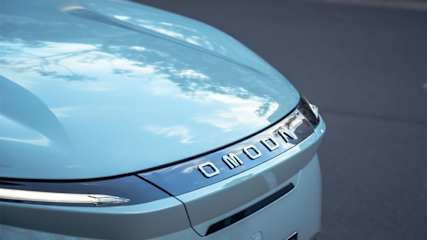
Cars have never been harder to design than in the EV era, so how does Chery's design chief think we can make them more exciting? Hyundai, BMW and Audi might give us a clue
Read the article
By Samuel Irvine · 16 May 2025
Designing cars in the EV era isn’t as simple as it used to be, according to Chery’s Vice President and General Manager of Design, Steve Eum.The Korean-American design veteran and self-described automotive purist worked with some of the biggest names in the car industry, including Ford, General Motors and Hyundai, before joining the burgeoning Chinese firm in 2017.It was the same year Chery released its first electric car, the eQ1, marking a turning point for the brand as it began a fully fledged transition to electrification, carrying with it new design challenges.“Growing up, if you saw the front end of an Aston Martin or a Jaguar, you knew it was an Aston Martin or a Jaguar.”“With these newer energy vehicles, becoming a lot more simpler at the front, more cleaner, of course, but at the same time, you’re losing that identity,” said Eum.As car brands shift their priorities to aerodynamics and energy efficiency, designing a new car to be unique from its rivals has become an increasingly difficult task, said Eum.Take the front grille, for example.Irrespective of its functional purpose of cooling the engine on petrol and diesel cars, since the dawn of the motor car itself, the front grille has been the major identifier for car brands.But the problem for designers in the EV era is that they’re no longer required given there is no longer an engine to cool.In fact, a front grille on an EV can actually stifle aerodynamics, leading to lower energy efficiency that depletes driving range faster.“The grille plays a big part because it is that one piece of detail at the front of the car that really says it is a certain brand next to the badge. Of course, it gives a clear indication – especially from far away – about what vehicle is coming towards you,” said Eum.“As soon as you get rid of the grille, you’ve left this big part out of the visual identity.”The loss of the front grille has also coincided with the trend to adopt rounder body styling (also for aerodynamics), which Eum said has left little in the way of design features to tinker with other than the headlights and tail-lights.“A lot of vehicles are now designed because of regulation, aerodynamics and safety – it’s hard to get away from that.”But, depending on how you look at it, said Eum, the EV transition can either be viewed as a roadblock or an opportunity to experiment with more digital technologies.Hyundai is a prime example of how EV design can be individualised through the use of its LED lights, which incorporate a design technique the brand calls "Parametric Pixels”.As it might sound, Ioniq models use pixelated lights to create digital surfaces, lines and angles, rather than traditional physical styling.Audi is similarly an adopter of these lighting techniques. The LED light signatures on its newer models, such as the Q6 e-tron, are configurable to the driver's preferences and elicit different animations when locking and unlocking the car.BMW has gone a different route, reinstating the grille on some of its EV models but incorporating it as a flat panel that is, in some cases, much larger than on its petrol and diesel cars.The grille on the BMW iX, which is one of the brand’s largest to date, is coated with polyurethane to make it self-repairing from scratches and lined with LED lights to make its branding more conspicuous.According to Eum, it’s these sort of digital identifiers that will define Chery's car design going forward, rather than strictly physical ones.“I think, in the future, whether it be something that’s not so physically direct or so literal in terms of the physical grille, we might start experimenting with more digital aspects, like lighting, transparent lighting, opaque lighting and things of that nature.”“I think that gives more of an identity for the front part of the vehicle that supports the brand as well, and so, that's what we see for the future."
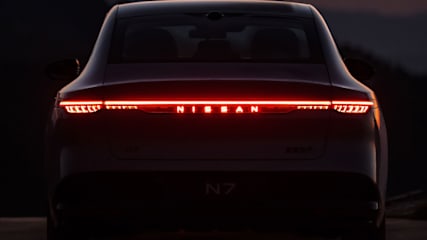
Proof that China now leads the car world: The Chinese car industry showed off in Shanghai, while the rest of the world falls behind | Opinion
Read the article
By Stephen Ottley · 06 May 2025
The recent Shanghai and New York motor shows demonstrated the increasing gulf between the surging Chinese car industry and the rest of the world.
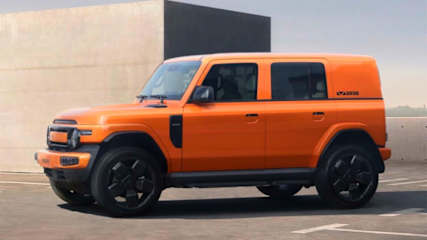
Another Chinese brand coming? Chery sub-brand iCar a chance to land in Australia with its electric Suzuki Jimny, Jeep Wrangler rival
Read the article
By Tim Nicholson · 01 May 2025
If you thought there’s no way Australia could accommodate yet another Chinese brand, then think again. Because it looks like another one is getting ready to launch.One of Chery’s many sub-brands, iCar, is likely to hit Australian shores in the coming years.According to Autocar, iCar will launch in the UK in 2026, however it will be marketed as ‘iCaur’ outside of China given Apple owns the rights to ‘iCar’.Chery Australia is remaining quiet on the iCar brand for now, with a company spokesperson telling CarsGuide: “We’re certainly interested in the exciting product that was revealed at the Shanghai Motor Show. However, at this early stage there are no confirmed plans.”That exciting product is the iCar V23, a small, rugged, electric off-roader that looks like a shrunken Jeep Wrangler.The V23 is already on sale in China and it comes with a choice of three electric powerplants including a 100kW single-motor base grade with a 47.3kWh LFP battery and about 300km of range on the lenient CLTC cycle.Topping the range is a 155kW dual-motor powertrain with an 81.8kWh NMC battery and around 500km of range.Following the boxy V23 in the UK at least will be the larger V25 SUV that comes with a range-extender powertrain including a 1.5-litre turbocharged petrol engine.Beyond that, Autocar said there is a small SUV in 2027 called the V21 that will be a Jeep Avenger rival, while a large V29 is also on the cards.If iCar comes to Australia it will add to the growing stable of Chery and its sub-brands. Currently the Chinese giant sells the Tiggo range of SUVs (Tiggo 4, 7 Pro and 8 Pro Max) as well as the Omoda 5 small SUV and related E5 EV.The latter two will shortly be spun off under the Omoda sub-brand which sits alongside the more premium Jaecoo brand. Jaecoo offers the J7 medium SUV and will soon add the J8.Chery has had a strong start to 2025 with 6057 sales to the end of March, representing a 217 per cent increase year on year.
.jpg)
China's tough looking 4WD firms for Oz: Chery's off-road division hints at which of its GWM Tank 300 or Jeep Compass-rivalling SUVs will be available in right-hand drive as part of new-model blitz
Read the article
By Tom White · 01 May 2025
Jetour representatives hint at which of its off-road vehicles will be available in right-hand drive.
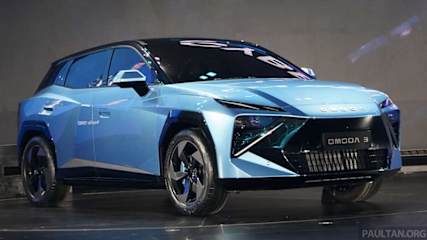
Look out, Kia EV3 and BYD Atto 3! New 2025 Chery Omoda 3 with electric, petrol and plug-in hybrid SUV variants under review for Australia
Read the article
By Samuel Irvine · 28 Apr 2025
Chery could have a BYD Atto 3 and Kia EV3 rival in Australia shortly following the Omoda 3’s reveal at the Shanghai auto show last week.According to Autocar UK, the small SUV with an optional electric, plug-in hybrid (PHEV) or petrol powertrain has been confirmed for the UK – a fellow right-hand drive market.Chery’s local arm told CarsGuide it is interested in the model for the Australia market, although it is yet to confirm a timeframe for its release.The Omoda 3 represents a new design language, with the Chinese company opting for angular lines and a shark-nose grille, giving it the impression of a $400,000 Lamborghini Urus, despite the Omoda 3’s likely starting price nearer the $35,000 mark.It lines up at 4420mm long, making it 50mm longer than the current Omoda 5. According to Autocar, the new Omoda 5 will be stretched for its next generation.Exact powertrain specifications remain unclear at this stage, although it is likely to inherit Chery’s Super Hybrid System currently underpinning the new Jaecoo J7, with which it shares a platform.It combines a 1.5-litre four-cylinder turbocharged petrol engine, which makes 105kW, with a 150kW electric motor and a single-speed transmission. A 18.3kWh lithium-iron-phosphate battery, meanwhile, provides 90km of electric range.Inside, the Omoda 3 adopts what Chery is calling a “starship cockpit” that features a portrait-oriented central display and a smaller landscape-oriented digital driver’s display.The Lamborghini inspiration continues with what appears to be a centre-console mounted push-button start with a red switch cover.Customers will also reportedly be able to modify their Omoda 3 with an “official racing pack” that adds body wraps.Chery Australia announced recently that it would split off Omoda into its own sub brand, sitting alongside the more premium Jaecoo.Chery has had serious sales success in Australia this year with the brand clocking some 6057 sales to March – an increase of 216 per cent compared to the same period last year.Its new Tiggo 4 – a rival to the MG ZS, Kia Stonic and Toyota Yaris Cross – has led the charge, registering 3338 sales so far this year.The announcement of the Omoda 3 follows news of Chery’s global plans to launch 19 new hybrid models across this year.
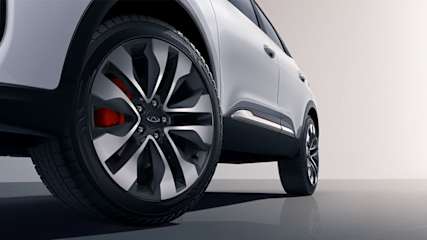
Australia's most affordable small SUV upgraded: Popular 2025 Chery Tiggo 4 Pro levels up to tackle MG ZS, GWM Haval Jolion and Hyundai Kona
Read the article
By Samuel Irvine · 16 Apr 2025
Chery has announced its popular small SUV, the Tiggo 4, has been given a modest upgrade for the 2026 model year.Still priced at just $23,990 for the Urban or $26,990 (both drive-away) for the flagship Ultimate, the Tiggo 4 remains Australia’s cheapest SUV, undercutting the MG ZS and GWM Haval Jolion (both priced at $26,990 drive-away), despite the new updates.Headlining the changes are new 17 and 18-inch alloy wheels and a redesigned rear end, which adds a LED tail-light bar that brings the car into line with the rest of the Chery line-up. The Ultimate grade also gets a 15W wireless charging pad.As before, both variants carry dual 10.25-inch LCD screens for multimedia and digital driver’s display functions. Wireless Apple CarPlay and Android Auto, as well as Chery’s voice command assistant, come standard.The Ultimate steps things up with a surround-view camera, synthetic leather seats and ambient lighting.As before, the Tiggo 4 Pro is powered by a 1.5-litre turbo-petrol engine that delivers 108kW/210Nm to the front wheels through a continuously variable transmission (CVT). Combined fuel consumption is claimed at 7.4L/100km, while carbon emissions are quoted at 168g/km.All Chery vehicles are covered by a seven-year/unlimited-km warranty, along with seven years of capped-priced servicing and up to seven years of roadside assistance.The Tiggo 4 Pro has helped launch Chery to mainstream contention this year, with 3338 sales in the first three months of the year, or more than 5200 since the car launched in Australia roughly six months ago.Now the most popular model in Chery’s catalogue, the brand’s sales have risen 216.6 per cent compared to the same period last year.Interested buyers can test drive the Chery Tiggo 4 Pro at the brand's showrooms from today.

Chery's hybrid masterplan to take down BYD, MG and Toyota: The staggering number of new plug-in hybrid and range-extender cars in the Chinese brand's product pipeline revealed
Read the article
By Samuel Irvine · 14 Apr 2025
Chery has announced it will develop 39 new hybrid cars across its different product lines, consisting largely of plug-in hybrid and range-extender models.According to Autohome, the move is a part of a new three-pillar business strategy that was detailed by brand executives during a “Hybrid Night” press conference last week at Chery’s headquarters in Wuhu.The new approach will prioritise vertical integration, improved safety standards and open source technologies, the latter of which meaning Chery will make its new hybrid technologies available to other automakers. KGM SsangYong is already a signatory, with Chery platforms poised to underpin a new range of joint-developed hybrid SUVs.At least three new hybrid powertrains will be developed by Chery to accommodate different applications. That starts with the CDM/CEM powertrains, which will denote the systems fitted to mainstream passenger vehicles such as the Chery ‘Fulwin’ Tiggo Pro 8 and Tiggo Pro 9.It allows for one of three 1.5-litre turbo-petrol engine configurations paired with either a range-extender (REEV) or plug-in hybrid (PHEV) drivetrain. Chery claims the petrol engine will be able reach a thermal efficiency of 48 per cent, making it among the most efficient in the world.The brand’s more performance-oriented cars under its Exceed, Luxeed and iCar sub-brands, will carry CDM-S and CEM-S hybrid powertrains, which pair either a 1.5-litre or 2.0-litre turbo-petrol engine with PHEV, REEV or plugless hybrid drivetrain options.And finally, the off-road oriented Jetour sub-brand will carry CDM-O and CEM-E powertrains that pair either a 1.5-litre or 2.0-litre turbo-petrol engine with newly-developed dual electric motors and a brand-new off-road specific three-speed hybrid transmission.The powertrains will be made available on the plug-in hybrid Jetour G700, G900 and T1 models in China, and while Chery is yet to confirm the off-road sub-brand for Australia, it remains in with a strong chance as the brand gains a foothold in the Australian market.Last year, Chery sold 12,603 cars, an increase of 113 per cent on the previous year. Sales are looking even stronger in the first three months of 2025, with the brand already clocking 6105 sales, an increase of 216.6 per cent on the same period last year.The recent addition of Chery's self-described "premium" Jaecoo sub-brand will only build its momentum even further, while a hybrid version of the brand’s most popular car, the Chery Tiggo 4 small SUV, is expected to arrive later this year.It will be followed by plug-in hybrid versions of the Tiggo 7 and Tiggo 8, which will go head-to-head against medium SUV stalwarts in the Toyota RAV4, Ford Everest and Hyundai Santa Fe.





